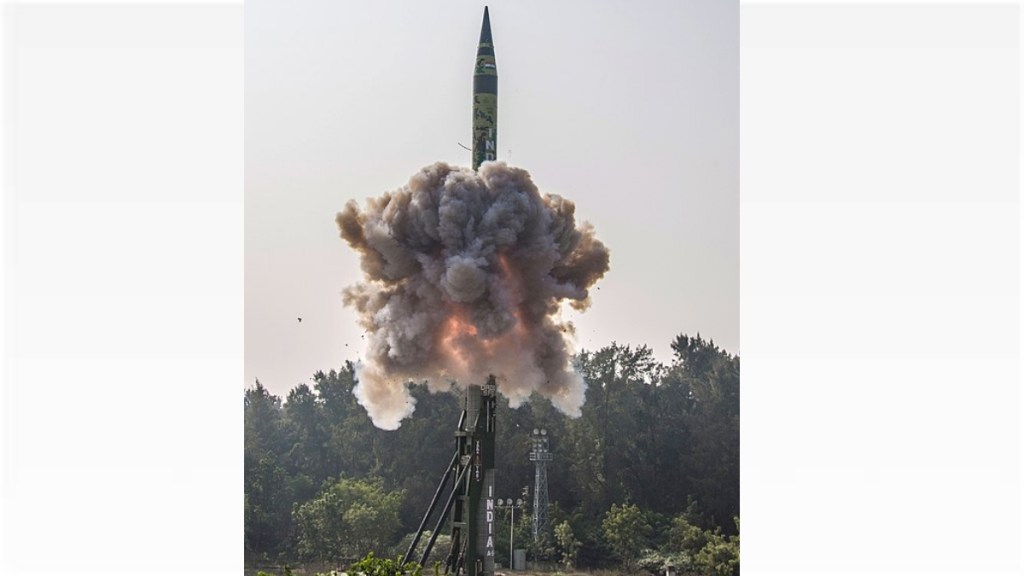Prime Minister Narendra Modi made a big announcement on Monday evening and said that the Defence Research and Development Organization’s (DRDO) `Mission Divyastra’ has been successful. With the test of Mission Divyastra, India has joined the select group of nations who have MIRV capability.
In a social media post on X, the Prime Minister hailed DRDO scientists for Mission Divyastra. “Proud of our DRDO scientists for Mission Divyastra, the first flight test of indigenously developed Agni-5 missile with Multiple Independently Targetable Reentry Vehicle (MIRV) technology,” PM Modi said.
This indigenous missile system is equipped with Avionics systems and high accuracy sensor packages all made in India. This has ensured that the re-entry vehicles reached the target points within the desired accuracy. The capability is an enunciator of India’s growing technological prowess.
What is MIRV Capability
This consists of several re-entry vehicles, and each one is equipped to carry 2–10 nuclear warheads. According to information in the public domain these warheads can be designated for various targets, and placed several hundreds of kilometres apart. Alternatively, multiple warheads can target a single location.
It is a ballistic missile payload designed for Ex-atmospheric deployment. It is mainly associated with intercontinental ballistic missiles equipped with thermonuclear warheads; the concept extends beyond strict limitations.
An intermediate variant, the Multiple Re-entry Vehicle (MRV) missile, disperses multiple warheads without individual targeting. Countries including the US, the United Kingdom, France, Russia, and China have the MIRV missile systems that can be deployed. And, today, India has joined the elite list.
About Agni-5
DRDO the nuclear-capable long-range missile Agni-5 is indigenously designed and developed carbon-carbon composite heat shield which maintains the inside temperature to below 50 degree Celsius and new state of the art navigation and guidance, warhead and engine. The three-stage, 17-metre tall and 2-metre-wide missile has a range of 5000 km. It can carry a nuclear warhead weighing up to 1.5 Tonnes.
The Agni-5 missile is equipped with fault-tolerant software. After reaching the peak of its trajectory, it is expected to turn towards the earth and then move towards the target with greater speed due to the earth’s gravitational pull. When India carried out the first successful test of Agni V in 2012, it entered into the Intercontinental ballistic Missile (ICBM) club.
Compared to other missiles globally, Agni-5’s striking capability is significant. While Agni-II, III, and IV cover shorter to intermediate ranges, Agni-5 extends India’s reach substantially. In the global arena, the United States, Russia, China, France, Israel, and Pakistan each possess their own arsenal of missiles, each with varying capabilities and ranges.


